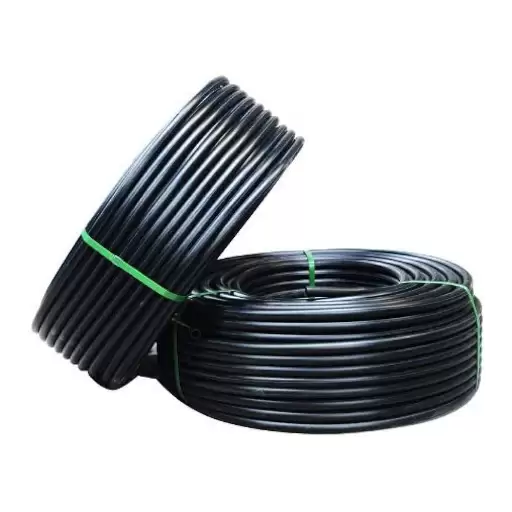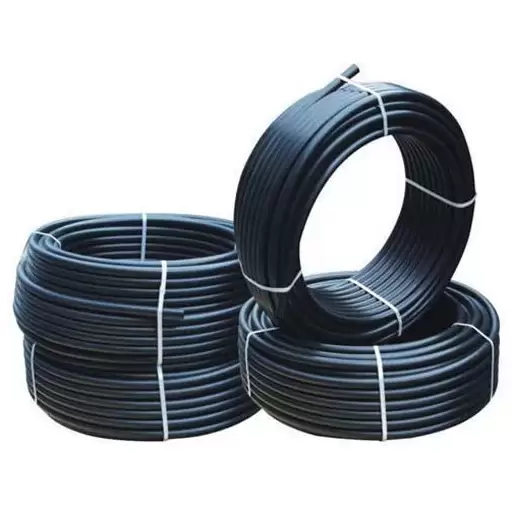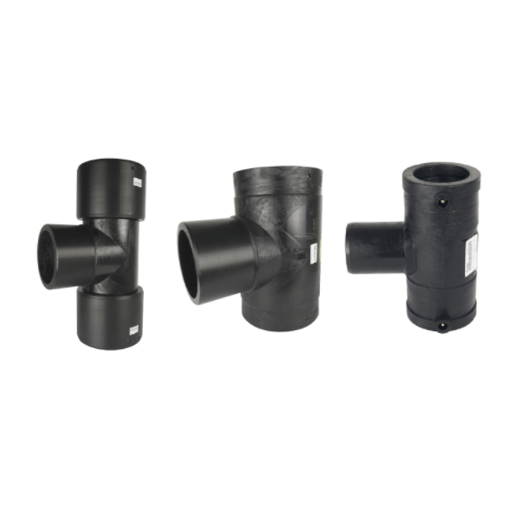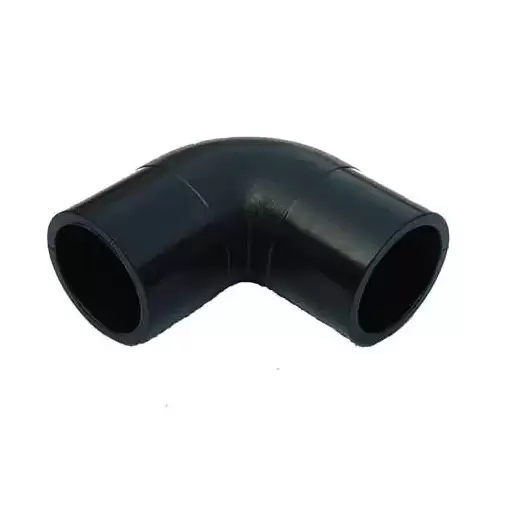High-density polyethylene (HDPE) pipes have become a pivotal solution in industrial and municipal applications, renowned for their durability, flexibility, and cost-efficiency. Black HDPE pipe, in particular, stands out due to its ability to resist corrosion, withstand extreme conditions, and deliver long-term performance in demanding environments. Whether you’re managing a complex water distribution system, a gas pipeline, or a wastewater project, understanding the properties and benefits of this material is essential.
What Are the Main Applications of Black HDPE Pipe?
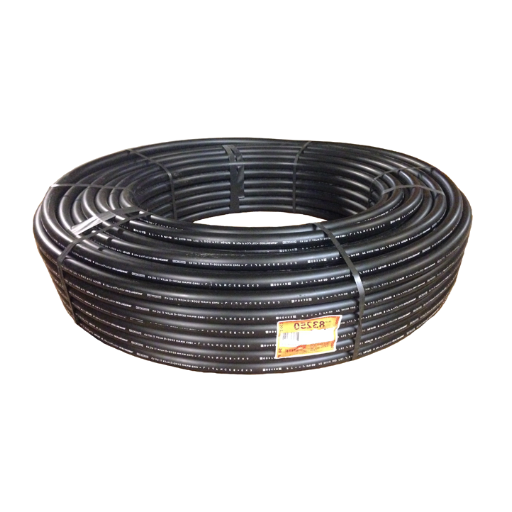
Understanding Its Use in Water Systems
Black HDPE (High-Density Polyethylene) pipes are popularly used in water distribution and management systems due to their remarkable physical and chemical properties. Because of its greatly reduced susceptibility to reactive plumbing materials, water is not contaminated throughout its transport which makes it suitable for a potable water application. Furthermore, the capability of HDPE pipes to withstand high and low temperatures makes them function reliably across different regions.
Following the processes of installation, HDPE pipes also posses significant advantages in modern day water systems in terms of minimal leak potential, which is achieved thorugh fusion welding. This results in a fused system of pipes and joints which reduces water loss dramatically. HDPE pipelines have leakage rates upwards of 0.05%, which is much more economical than traditional metal and concrete systems.
Additionally, the low weight of HDPE pipe lowers expenses related to transportation and installation, making it economical for large-scale water management projects. Its flexibility also permits easy installation on uneven terrain or difficult geological features. Due to these advantages, it is increasingly accepted as a material for municipal water supply, irrigation systems, and even industrial water processing systems. Implementing the durability and efficiency of HDPE pipe in water infrastructure systems increases the service life of water infrastructure while reducing maintenance costs.
How Is HDPE Pipe Utilized in Gas Distribution?
Due to its beneficial mechanical properties and cost efficiency, HDPE (High-Density Polyethylene) pipe is critical for modern gas piping systems. The flexibility of HDPE allows for fusion welding, forming strong seals that reduce gas leakage. Furthermore, an HDPE pipe’s ability to resist corrosion, erosion, and chemical degradation makes it suitable for transporting natural gas and other gaseous fuels due to its safe reliability in various environmental conditions.
Progress made in material science has led to achievements in HDPE pipes used in gas distribution. Now, manufacturers can produce pipes with higher pressure ratings for integration into urban and industrial gas systems. Another feature of HDPE pipes is, they can sustain extreme ground movements without losing function including seismic, temperature, and soil settling changes. This strength helps explain their growing use in new age installations and in replacing older metallic pipes.
HDPE pipes provides an efficient and sustainable means to upgrade outdated gas distributing technology, reduction of service outages and environmental gas demand, all while being cost friendly and reducing the carbon footprint. These factors solidify the reason of why they’re viewed as technically superior.
Industrial Applications and Their Benefits
The durability, flexibility, and withstand ability to chemicals of HDPE pipes makes them apt for industrial use; thus, HDPE piping systems are ubiquitous in many industries. The oil and gas, mining, agriculture, water treatment, and chemical processing industries depend on using HDPE pipes for transporting fluids, gases, and even chemicals regardless of the ambient temperature and conditions HDPE’s high impact strength enables pipes to endure.
In the oil and gas sector, HDPE pipes are used for slurry pipelines and hydrocarbons. Likewise, in mining operations, HDPE’s abrasive resistance makes handling slurry or tailings less costly in terms of equipment failure or maintenance. More so, in water treatment and supply networks, HDPE pipes minimize water loss, ensuring leak-proof solutions while strategically meeting benchmark compliance standards.
Last but not least, HDPE is adept at dealing with trenchless installations like pipe bursting and horizontal directional drilling. These technologies advance urban development with minimum surface destruction. Consequently, from reducing long-term maintenance expenditures to curtailing operational downtime, HDPE has proves its mettle in many industrial applications.
Its lightweight reduces fuel consumption and emissions associated with transportation, while its recyclability fits within sustainable infrastructure goals. Taken together, these attributes make HDPE piping systems essential features of contemporary and future industrial systems.
What Are the Specifications of Black HDPE Pipe?
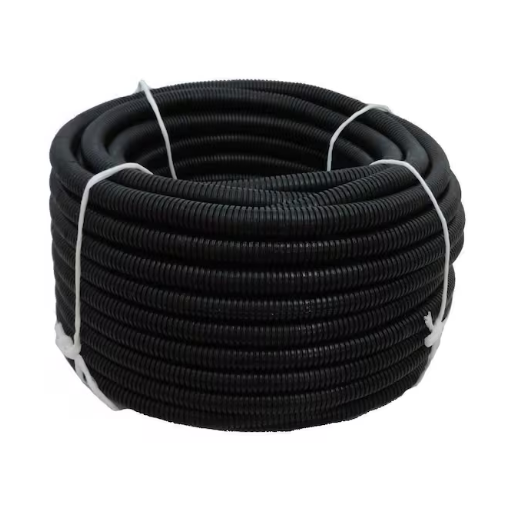
Exploring Dimension and Diameter
Black HDPE pipes are produced in various sizes and dimensions, and they serve multiple purposes across different sectors. The most frequently used measurement standard is the outside diameter (OD), which determines the size class of the pipe. Black HDPE pipes are between ½ inch (12.7 mm) to 63 inches (1600 mm), or even larger, in diameter according to ASTM and ISO standards.
Another thing to be aware of is the Standard Dimension Ratio (SDR), which is the ratio of a pipe’s outer diameter to its wall thickness. This ratio determines the strength and pressure rating of the pipe. A lower SDR value indicates thicker walls and higher pressure tolerance. Such pipes are suited for highly demanding gas distribution systems and industrial fluid transport.
Moreover, the straight lengths of pipes usually fall between 20 feet (6 meters) to 40 feet (12 meters). Coiled pipes, on the other hand, can reach smaller diameters of 500 feet (152 meters) or even longer. This range provides ease of installation and minimizes the need for numerous connections which improves operational efficiency. The adaptability of black HDPE pipes allows these dimensions to be changed, meeting the specific hydraulic, mechanical, and environmental requirements of the project.
Key Specifications and Ratings to Consider
Evaluating certain criteria is important before applying black HDPE pipes to maintain optimal performance and compliance with a given project scope:
- Pressure Rating (PR): The pressure rating (PR) of these HDPE pipes is dictated by the wall thickness and external diameter ratio (SDR). They are generally rated between at 63 psi and 200 psi with specialized applications increasing those values for high demand usage scenarios.
- Standard Dimension Ratio (SDR): Some common SDR classifications include SDR17 and SDR21 with associating pressure and flow needs. SDR also defines the ratio of the pipe’s outer diameter to its wall thickness.
- Temperature Tolerance: The integrity and functionality of the HDPE pipes is sustained across a wide range of temperatures from 23°F (-5°C) to 140°F (60°C). This allows the pipes to be used in a variety of climates and applications.
- Chemical Resistance: Due to being black, these HDPE pipes may be exposed to a stringer range of fluids or environment with potential chemicals as they have exceptional resistance to corrosive chemicals making them useful in industrial or waste management sectors.
- UV Stabilization: These pipes are made from substances that include carbon black. This guarantees robustness and protection from getting damaged from sunlight and other harmful UV rays which aids in increased exposure protection.
- Life Expectancy: Correct using HDPE pipes features due for maintenance and replacement scopes of up to 100 years. Lowering upkeep activities and expenses between five and twentyfold could greatly enhance financial resources.
- Leak Resistance and Joint Integrity: Completely leak-proof joints and higher leak driving safety and operational reliability are critical in fluid and gas conveying systems.
Incorporating all those requirements along with the strength and flexibility of HDPE materials makes black HDPE pipes suitable for many uses, including but not limited to water distribution, sewage, industrial processing, and agricultural irrigation. Using pipes with appropriate mechanical features aligned with a given project greatly improves durability, cost effectiveness, and functional life.
How to Choose the Right Pipe for Your Needs
Choosing the correct pipe for an application requires consideration of several key factors that need to be optimized for performance, cost, and longevity. Start by evaluating the fluid or material for transport, as this will dictate the chemical resistance and pressure rating of the pipe. For example, potable water pipes must adhere to food-grade safety standards and industrial ones might need to resist corrosive materials or high temperatures.
Then, take into account the environmental conditions of the area where the pipe will function. Soil type, temperature changes, UV exposure, and risk of mechanical stress all affect material choice. For example, black HDPE pipes are popular for outdoor use because of their resistance to UV radiation and harsh weather.
And finally, do not forget to consider the required pipe dimensions, pressure rating, and flow requirements. The pipe must be sized appropriately for optimal material transport, pressure ratings should meet system requirements to avoid fractures or leakage.
Lastly, consider the requirements for installation and upkeep. Lastly, include the specifics of how the system will be installed and maintained. Outfitting methods with high butt fusion or electrofusion jointing capabilities minimizes installation outages and improves hermetic sealing. Meeting these criteria helps the project stakeholders integrate the material attributes and operational workflows for sustained dependability and efficiency in their piping systems.
How Is Black HDPE Pipe Installed?
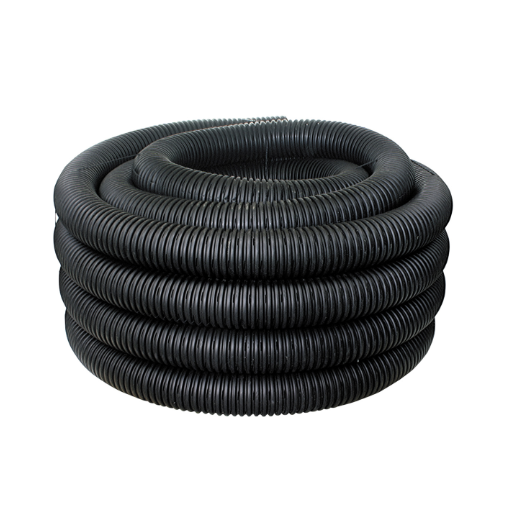
Essential Installation Techniques
Following rigid industry practices and procedures is a must for the installation of black HDPE pipe to guarantee satisfactory efficiency and longevity. There should be and maintained a uniformly distributed support along the bottom and compacted base devoid of pointy features, sharp objects, or any non-harmful debris that could lead to destruction of the pipe. Also, care should be taken not to damage the surfaces of the pipes while lowering them into the trench. Also, while lowering the pipes using non-abrasive straps or slings, care should be taken not to flatten the shape of the pipes.
Completion of the seal is done in a manner where no leakage occurs while upholding the structure. Seamless joints under controlled pressure provided to the ends of uniformly shaped pipes is butt fusion and fuses them, is recommended for pipes with straight runs and uniform diameters. On the contrary, ElectroFussion uses specific fittings that have heating wires within them, meant for making the connections. Both procedures are meant to provide rigorous strength and durability.
Also, to minimize thermal contraction, proper allowances for expansion should be ensured during installation, especially on large differential temperature pipelines.
Common Challenges and Solutions During Installation
- Pipe Misalignment
- Challenge: When pipes are being installed, particularly when lifting long or heavy sections, there is a possibility of misalignment due to the working environment’s space restrictions (confined spaces, uneven terrains). This can pose the threat of joint malfunction and failure of system stability.
- Solution: Make use of precision alignment devices and provide adequate pipe supports for proper alignment, install accurate pre-fabricated fittings, and modify the piping system before cutting or assembling the final parts.
- Undercutting Proper Fusion Temperature, Periodi,c or Time
- Challenge: Components that have the capability of dynamically or statically varying the frequency of steering transform lower frequency regions into uncertain gaps (joints) through which water flows. Gaps would result in weak joints, less durable to pipeline system. This is a common problem for when equipment is poorly calibrated.
- Solution: Avoid using loose fusion applied at a distance feature and equipment conserves power while supporting enclosure dynes, while hydraulic control while confirmed to defend specified sections, cyclically adjusted delay monitor fused equipment time-bound.
- Contaminated Ends of Pipe
- Challenge: Pipes’ ends entailing dirt, moisture, or grease run the risk of dooming welds or failing, especially in high-dirt environments.
- Solution: Remove unapproved cleaning fluids from end pipes, cover sides of pipe sealing while being raised atop during assembly position, employ effective putty-liberal guards.
- Contraction and Expansion of Thermal Energy
- Challenge: The disruption or complete destruction of a pipeline’s connection system is caused by the constant exposure to high temperatures which enables thermal expansion or contraction, is a significant concern.
- Solution: Placement of flexible joints, expansion loops, bolstered spacing supports, and proper balance of thermal movements.
- Failure of Equipment
- Challenge: The major concern here is that any faulty or ineffective piece of equipment can cause an operational standoff that severely increases the downtime, risking the deadline.
- Solution: Conduct all maintenance and checkups for tools and equipment to be utilized during the installation as a pre-installation activity. They should also be readily available at the site so that minor rapid repairs can be carried out by trained personnel.
The overall safety of the pipeline system and performance is enhanced when the challenges mentioned above are solved properly addressing the installation procedure.
What Are the Benefits of Using Black HDPE Pipe?
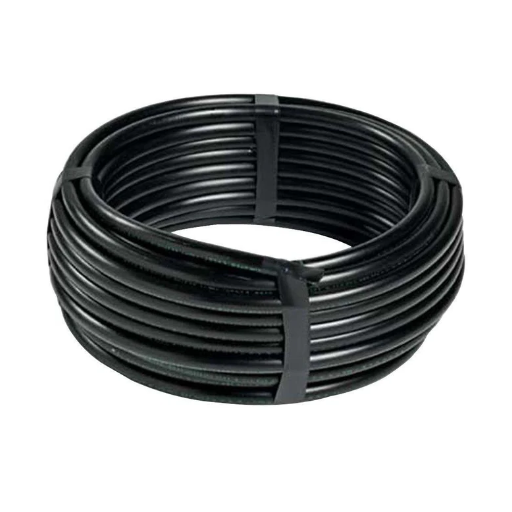
The Durability and Longevity of HDPE
High-Density Polyethylene (HDPE) pipes are widely used and are in high demand due to their exceptional durability and long operational lifespan. Resilience of HDPE materials stems from impact and stress resistance provided by the unique molecular structure of the materials, enabling efficiency with the flexibility under stress without compromise to its structural integrity. Studies suggest that HDPE pipes outdate traditional piping materials, lasting up to and over 50 years under normal use.
Unlike many materials, including metal, HDPE as a material is absolutely corrosion, environment, and chemical reaction resistant. The long life span of HDPE pipes contributes to these facts. Items such as Acids, alkalis, and brine do not cause rusting, rotting, or corrosion. In addition, the material’s thermal conductivity does not pose any risk of damage due to fluctuating temperatures, which increases stability across different types of climates, along with aiding in the preservation of the item.
HDPE ensures proper efficiency in joint integrity as well. Advanced fusion welding methods such as expense fusion or butt fusion guarantee leak proof connections and joints on HDPE pipes enabling no chances of infiltration or exfiltration HDPE pipes which leads towards reduced maintenance burden in the long run. This leads to preservation and further increases longevity even in areas with shifting soils or high-pressure systems.
The dependable and cost-effective solution offered by HDPE pipes comes from their advanced integration of calcium carbonate, fine sand, CDF, and PPR in HDPE pipes, along with their innovative installation techniques. The innovative techniques guarantee infrastructure projects are consistent, safe, and sustainable on a global scale.
Why It Is Resistant to Chemicals and Corrosion
Because of its chemical make up and properties, HDPE pipes have resistance from chemicals as well as corrosion. Being non-polar, HDPE does not react with acids, bases, or salts which are known to chemically damage piping systems. In addition, HDPE is very resistant to oxidative environments owing to its durable carbon-to-carbon bonds and low permeability that render it resistant to solvents and reactive materials.
HDPE does not alter its form under pressure from moisture or highly corrosive substances like soil chlorides and sulfates or industrial waste. Unlike electrochemically prone metallic materials that succumb to rusting, HDPE is free from a metallic structure, which means no galvanic or electrolytic corrosion occurs. The resistance to harsh chemical environments translates to dependable longevity, low maintenance, and reliability for critical applications such as mining operations, wastewater treatment, and chemical transport.
Continued advancements in polymer technology reinforce the adaptability of HDPE in extreme conditions depicting it as a prime candidate for modern infrastructure designs.
Environmental and Sustainable Advantages
Like most materials, High-Density Polyethylene (HDPE) has both pros and cons. Nevertheless, the benefits of HDPE support environmental sustainability, resource efficiency, and overall repurposing. HDPE is 100% recyclable, unlike many other materials, meaning it can be fully reprocessed and renewed into more goods without losing its quality. This subsequently diminishes the need to manufacture new plastic, which results in protecting the environment by conserving greenhouse gases and fossil fuels.
Moreover, the lightweight of HDPE allows for easier transport and reduces both fuel consumption and contribution to emissions during shipping. For instance, HDPE pipes are ubiquitous in the water and gas industry because of their lightweight nature compared to steel or concrete. In addition, the stronger resistance of HDPE products towards UV rays, chemicals, and other pollutants, alongside its durability, greatly diminishes the need for repurchasing, creating a decrease in the overall consumption of resources and waste over time.
The composition of HDPE enables a water conservation perspective which helps fight against water-scarcity. Its low porous natures coupled with leak proof jont systems guarantees little to no water consumption within pipeline infrastructures. These attributes highlight the efficiency of HDPE tackles when coupled with modern environmental demands. Industrial research also claims that using post-consumer recycled (PCR) HDPE reduces energy output by 88% in comparison to using new resin, further lowering industrial energy consumption.
Developments in polymer stabilization technologies and the increasing availability of PCR-HDPE improve the environmental profile even more, positioning HDPE as the preferred material for industries that focus on sustainability.
How Does the Size and Length Affect HDPE Pipe Performance?
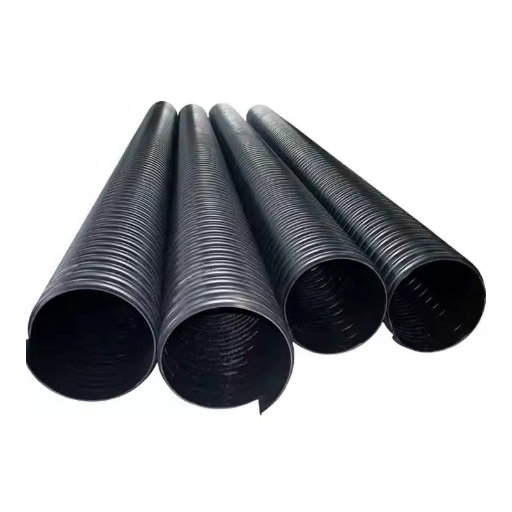
Impact of Diameter on Flow and Pressure
The diameter of an HDPE pipe affects the flow rate and pressure within a certain range of flow rate, pipe length, and friction. From the laws of fluid mechanics, while a fluid is set to flow through a pipe of given diameter, it faces a certain resistance from friction; we can say the friction force offers resistance against motion. It can be said that a larger diameter or area of expansion will reduce flow speed with friction loss, energy loss, and in turn result in to drop in consumption of energy. A smaller diameter will increase the speed of flow, leading to an increase in friction losses and an increase in resultant drop in pressure.
Increases in pipe diameter can lead to cubic reductions in pressure loss, given that the reduction becomes exponential concerning flow capacity. This is why diameter selection becomes vital for systems where high efficiency and energy savings are crucial.
Smaller HDPE pipes tend to require greater pumping power, whereas larger pipes incur significantly higher material costs and pose increased difficulty during installation. Therefore, comprehensive optimization of an HDPE piping system’s costs and performance is achieved through a thoughtful assessment of its operational, specifically the required flow, and pressure tolerance of the system.
How Length Influences Installation and Cost
The distance covered by an HDPE piping system is quite important as it determines the intricacy involved during the installation. It also determines the overall expenditure of the project. A greater length of pipe means more work with longer installation periods due to the additional fusion joints and fittings that need to be added to fasten the pipeline. Each fusion joint gives room for failure; thus, ensuring extensive regulatory checks during the installation is paramount.
Prolonged pipelines also increase the amount of money required for material procurement, transportation, and handling. While the light weight of HDPE is an advantage in comparison to older materials such as steel and concrete, the extensive logistics that come with the length HDPE needs to be strategically planned for in order to not add any undue costs.
Moreover, additional spans of HDPE piping have to take thermal expansion and contraction into consideration. This makes the use of focused anchoring and expansion loops required in some areas. These specifications add to the existing complexity of the project, thus increasing the costs. Meticulously accurate calculations during the planning stage are essential to guarantee both an economically appropriate and dependable installation of HDPE over such immense lengths.
Choosing the Correct Size for Specific Applications
As with any other application, selecting the right size of an HDPE pipe is fundamental for the accomplishing of durability, cost effective value, performance and efficiency. Custom fittings industrial systems tend to need hassle pipes with large diameters due to the need to reduce friction losses, on the other hand, pressurized water mains also need to have their pipes rated to classes. Usually, these are PN10 or PN16, meaning that they need to be capable of withstanding the stress of being used in the system.
One other critical aspect that needs to be kept in mind is the dimensions of the pipe. More specifically, it’s SDR, also known as Standard Dimension Ratio. Unlike the rest, a smaller SDR translates into thicker walls, which means that there is greater resistance against external loads. Depending on the type of fluid, the thickness of the walls or coatings on the inside needs to be adjusted. For abrasive and corrosive fluids, a thinner wall translates into less wear, which increases the lifespan of the pipe.
As a result, choosing the correct size enables the system to operate in accordance with the designated objectives for each project, thus enhancing efficiency and reliability.
References
Frequently Asked Questions (FAQs)
Q: What is PE piping, and what is its primary use?
A: PE piping, or polyethylene piping, is primarily used for transporting gases and liquids. Its primary use includes applications in water supply systems, gas distribution, and industrial fluid handling due to its high resistance to impact and corrosion.
Q: What are the benefits of using black HDPE pipe in industrial applications?
A: Black HDPE pipe is valued for its high resistance to impact and abrasion, making it ideal for industrial applications. It is easy to install, resistant to biological growth, and does not corrode, making it a reliable choice for long-term use.
Q: How does the controlled outside diameter affect the installation of HDPE black pipe?
A: The controlled outside diameter of HDPE black pipe ensures a consistent fit and ease of installation. This consistency is crucial for maintaining the proper pressure and flow rates within piping systems.
Q: What recommendations exist for the use of HDPE pipe for water systems?
A: It is recommended to use HDPE pipe for water systems due to its ability to withstand high pressure and its resistance to corrosion. For non-potable water applications, HDPE pipes provide a durable and cost-effective solution.
Q: How does the inside diameter of an HDPE pipe impact its given application?
A: The inside diameter of an HDPE pipe affects its flow capacity and operating pressure. A larger inside diameter allows for greater flow rates, making it suitable for applications requiring high-volume throughput.
Q: What are the new products available in HDPE piping?
A: New products in HDPE piping include large-diameter pipes and innovations that enhance resistance to impact and abrasion. These advancements expand the range of applications and improve installation efficiency.
Q: Can HDPE piping be used for wastewater systems?
A: Yes, HDPE piping is well-suited for waste water systems due to its resistance to abrasion and chemical reactions. It offers a reliable solution for transporting waste water without risk of corrosion or leakage.
Q: What factors should be considered when selecting an HDPE pipe for a specific application?
A: When selecting an HDPE pipe for a specific application, consider the operating pressure, fluid type, and environmental conditions. Ensure the pipe’s dimensions, such as outside and inside diameters, comply with the application’s requirements for optimal performance.



